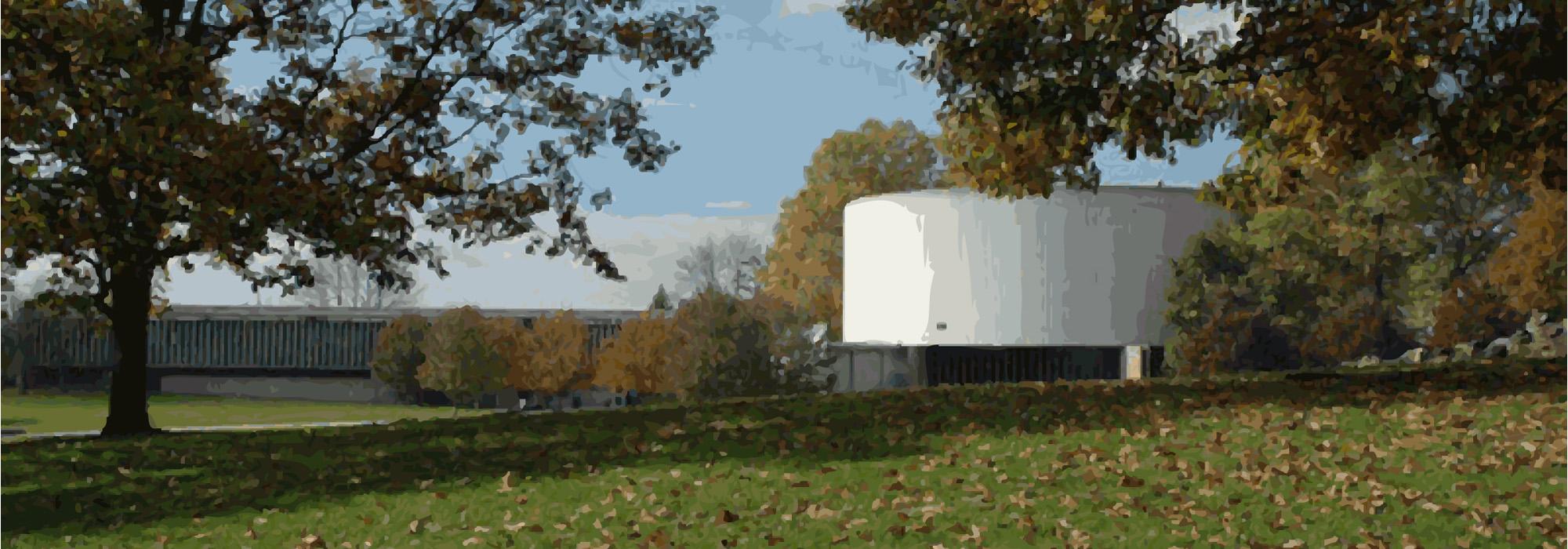It Takes One: Chris Madrid French
Like the buildings I study, I was born in the 1960s. I actually grew up only a few miles from architect Richard Neutra's Los Angeles home and office, something I found out years later while studying his work. I moved away from the modern cityscape of L.A. in 1984 to go to school at the University of Utah in Salt Lake City, where I worked as an assistant to a group of lawyers while earning an art history degree. Their offices were in a towering three-story 1890s Victorian house, on a street lined with old homes and churches. I was so inspired by this environment that I switched to architectural history and graduated with a degree in that area instead.
In the 1990s I worked as an historian for the National Park Service and the Historic American Buildings Survey/Historic American Engineering Record. I spent a lot of time hiking around Antietam National Battlefield in Maryland, the C&O Canal near Washington, D.C., and Prince William Forest Park in Virginia with archaeologist Stephen Potter. With HABS/HAER I also spent a summer in the western states, visiting dozens of beautiful, expansive landscape parks including Zion, Arches, and Bryce Canyon, all in Utah. I discovered the most incredible things during this time. There were mill ruins, the remains of entire communities, road traces, and unmarked graves. Putting these bits together and creating a cohesive "story" was a real challenge, but definitely one of the best jobs of my life.
It was during my time in the west that I uncovered the significance of the mid-20th century Mission 66 building program. Traveling through so many national park sites at once allowed me to see the modern visitor centers for what they truly were - a collection of regionally-inspired contemporary buildings constructed as part of an attempt to "regenerate" the parks. At that time most people I talked to preferred to forget this period of Park Service history rather than celebrate or protect it. I made it my personal quest to learn as much as I could about the Park Service's mid-century modern building program and - if possible - change people's attitudes toward these historic landmarks of the recent past.
How would you define a cultural landscape?
To me, a cultural landscape is a site of memory that can tell us something important about who we are - and who we once were - as a people. Even something as seemingly mundane as 1960s-era battlefield visitor center can reveal much about our changing interpretation of Civil War history and its relevance to the present. Every decision, from the placement of the building to the choice of modern or rustic design, offers insight into the values and strategies of our cultural custodians.
Why did you get involved in the landscape that was threatened in your community?
In 1998, I heard that Richard Neutra's 1961 Cyclorama Center at Gettysburg was to be demolished and the battlefield landscape "restored," an impossibility considering a century of change and the proliferation of private enterprises nearby. At that time I was writing my master's thesis at the University of Virginia on the Mission 66 Visitor Centers and knew this building and landscape was pivotal to the history of the site. I rushed to one of the public meetings and made my case for preservation to park officials. At that point I truly thought the superintendent would change course once he heard my argument. Little did I know that it would take more than a three-minute speech and impassioned appeals to Park officials to influence the decision-making process. Eight years and countless bureaucratic appeals later, I find myself taking the measure of last resort: suing the National Park Service and the Department of Interior for failing to comply with their own stringent review guidelines.
How did your understanding of this landscape change as a result of your advocacy efforts?
I realized that the history of the Gettysburg battlefield landscape reaches far beyond the study of troop movements and the "High Water Mark of the Confederacy." The architectural and cultural history of the borough of Gettysburg, Lincoln's Address at the cemetery, the War Department oversight at the turn of the century, National Park Service stewardship and additions, the Civil War centennial celebrations in the 1960s, as well as a thriving tourist service industry that began immediately after the original battle all add to the layering of history there. Each one of these cultural "themes" is important to understanding the landscape as a whole, yet people tend to ascribe vital importance to their own era of interest while diminishing the significance of movements outside their expertise.
Did the understanding of others change as well? If so, how?
None of the local people at the first public meeting I attended realized that the modern era of landscape development at Gettysburg was significant. Once they became aware of what was at stake, many became allies. The climate for preserving Mission 66-era buildings and landscapes is far better now than it was a decade ago. The National Park Service has listed three of their visitor centers as National Historic Landmarks and are restoring others rather than advocating demolition, which was the inclination in the early 1990s.
What is the message that you would like to give our readers that may inspire them to make a difference?
Do not be afraid to speak up when public officials fail to protect our cultural landmarks. Stand tall, even if at first you stand alone. One person can make a difference.







